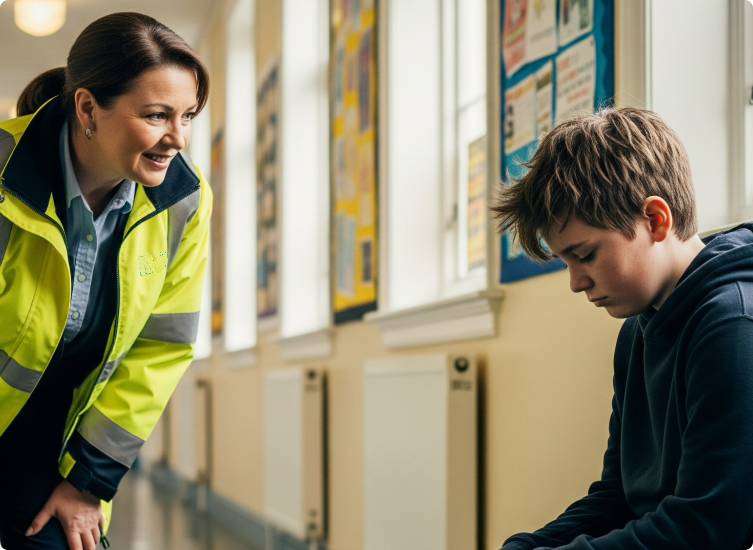Share this
Why Estates Teams Are Quietly at the Heart of Safeguarding
by Richard Melis on 12-Jun-2025 14:56:09
You might not see them in the strategy meetings.
You might not hear them in the case conferences.
But when it comes to safeguarding children, the work of the estates team speaks volumes — in the buildings they maintain, the risks they prevent, and the culture of safety they help create.
And the latest edition of Working Together to Safeguard Children makes that more relevant than ever.
A Shared Responsibility, Every Day
Estates teams have always played a vital role in school life — but too often, their role in safeguarding is seen as limited to:
-
Keeping gates locked
-
Managing fire alarms
-
Checking that doors close properly
Important? Absolutely.
But safeguarding is also about creating an environment where children feel safe, respected, and supported — a place where risks are actively minimised, and issues can be spotted early.
The guidance makes it clear: safeguarding is a whole-organisation responsibility.
And that includes estates teams.
This isn’t “extra” — it’s expected
The Working Together to Safeguard Children guidance is clear: safeguarding is everyone’s responsibility. It applies to all organisations and individuals whose work affects children — estates teams included. That means being alert to concerns, contributing to a culture of safety, and sharing information appropriately. In other words, this is very much part of their job — and one where they can deliver real value.
Why This Matters for Estates Teams
The guidance reinforces some key principles that apply directly to what estates teams do:
-
Vigilance:
“To have adults notice when things are troubling [children].”
→ Estate teams are constantly visible around school sites. They are often in corridors, grounds, and places where children move unsupervised. They see things others may not. -
Safe Environments:
It’s about much more than the absence of hazards. Children need an environment that promotes wellbeing — lighting, temperature, privacy, acoustics, and security all matter. -
Early Help:
The guidance stresses spotting early signs and sharing information quickly — which may start with something as subtle as noticing a child hanging around isolated areas or using facilities at odd times. -
Information Sharing:
No single practitioner holds the full picture. If an estates team member sees something concerning, they should feel confident in raising it — and systems must make this easy to do.
Practical Steps Estates Teams Can Take
1️⃣ Be Visible — and Approachable
Children often feel more comfortable talking to familiar adults outside the classroom.
Building trust starts with small, everyday interactions. A friendly hello. A familiar face on patrol.
2️⃣ Think Beyond Compliance
Of course estates teams need to check statutory items: fire doors, emergency lighting, playground safety.
But they can also think:
-
Are there secluded spots where children can hide or be approached unnoticed?
-
Is signage clear and inclusive?
-
Are communal areas welcoming and safe-feeling, not intimidating or neglected?
3️⃣ Speak Up
The guidance is clear: don’t assume someone else will pass on a concern.
If estates team members see or sense something wrong, they must speak to the Designated Safeguarding Lead — even if it feels small.
4️⃣ Share Learning
The guidance places emphasis on multi-agency learning and feedback loops.
Estate teams can contribute practical knowledge:
-
Which areas of the site are most difficult to monitor?
-
Are there patterns in misuse of spaces?
-
How can design changes reduce risk?
Culture Matters Most
Ultimately, safeguarding is about culture.
And estates teams help to create that culture through:
-
the tone they set when interacting with pupils
-
the pride they take in keeping the site safe and welcoming
-
the vigilance they show in noticing when something isn’t right
In a busy school, everyone has a safeguarding role — and for estates teams, that role is more important than they might sometimes realise.
Final Thought
One of the most powerful lines in the guidance is this:
“Children need adults to notice when things are troubling them.”
Estates teams are perfectly placed to notice.
And when they do — and when they act — they become an even more valuable part of the safeguarding system that protects every child in our care.

Statlog - The complete solution for premises management, trusted by educational leaders
Share this
- Multi-Academy trust (58)
- School (53)
- Strategic (51)
- Efficiency (47)
- Site Team (47)
- Compliance (38)
- Software as a Service (29)
- School Compliance Software (26)
- software (24)
- Budget (23)
- Competency (22)
- School Reputation (19)
- School Premises Management Software (15)
- School Compliance (14)
- School Premises Management Solution (13)
- Primary School (12)
- Safety (12)
- Captial Programme Manager (11)
- Secondary School (11)
- Building Survey (10)
- Document Manager (10)
- Asset Manager (9)
- Project Manager (9)
- CDM Regulations (8)
- Competent (8)
- Database (7)
- Health and Safety (7)
- Free Expert Advice (5)
- Mental Heath (5)
- Vetted Contractors (5)
- Conditional Assessment (4)
- Safeguarding (4)
- School Survey (3)
- Statutory requirements (2)
- Planned Preventative Maintenance (1)
- Sustainability (1)
- December 2025 (1)
- November 2025 (3)
- October 2025 (2)
- September 2025 (2)
- August 2025 (3)
- July 2025 (2)
- June 2025 (3)
- May 2025 (3)
- April 2025 (3)
- March 2025 (3)
- February 2025 (3)
- January 2025 (3)
- December 2024 (4)
- November 2024 (5)
- October 2024 (2)
- September 2024 (3)
- August 2024 (2)
- July 2024 (5)
- June 2024 (5)
- May 2024 (7)
- April 2024 (5)
- March 2024 (3)
- February 2024 (1)
No Comments Yet
Let us know what you think